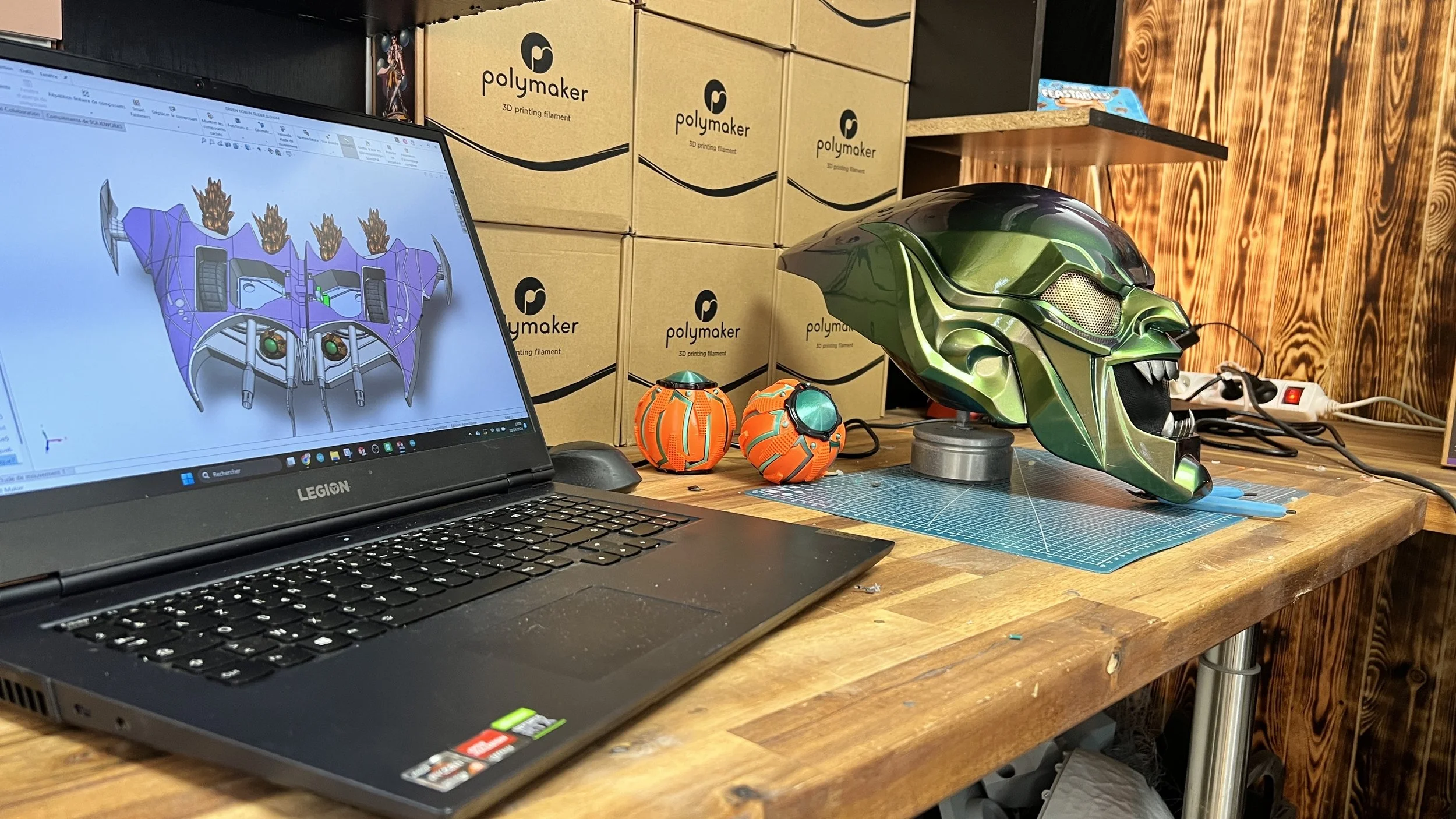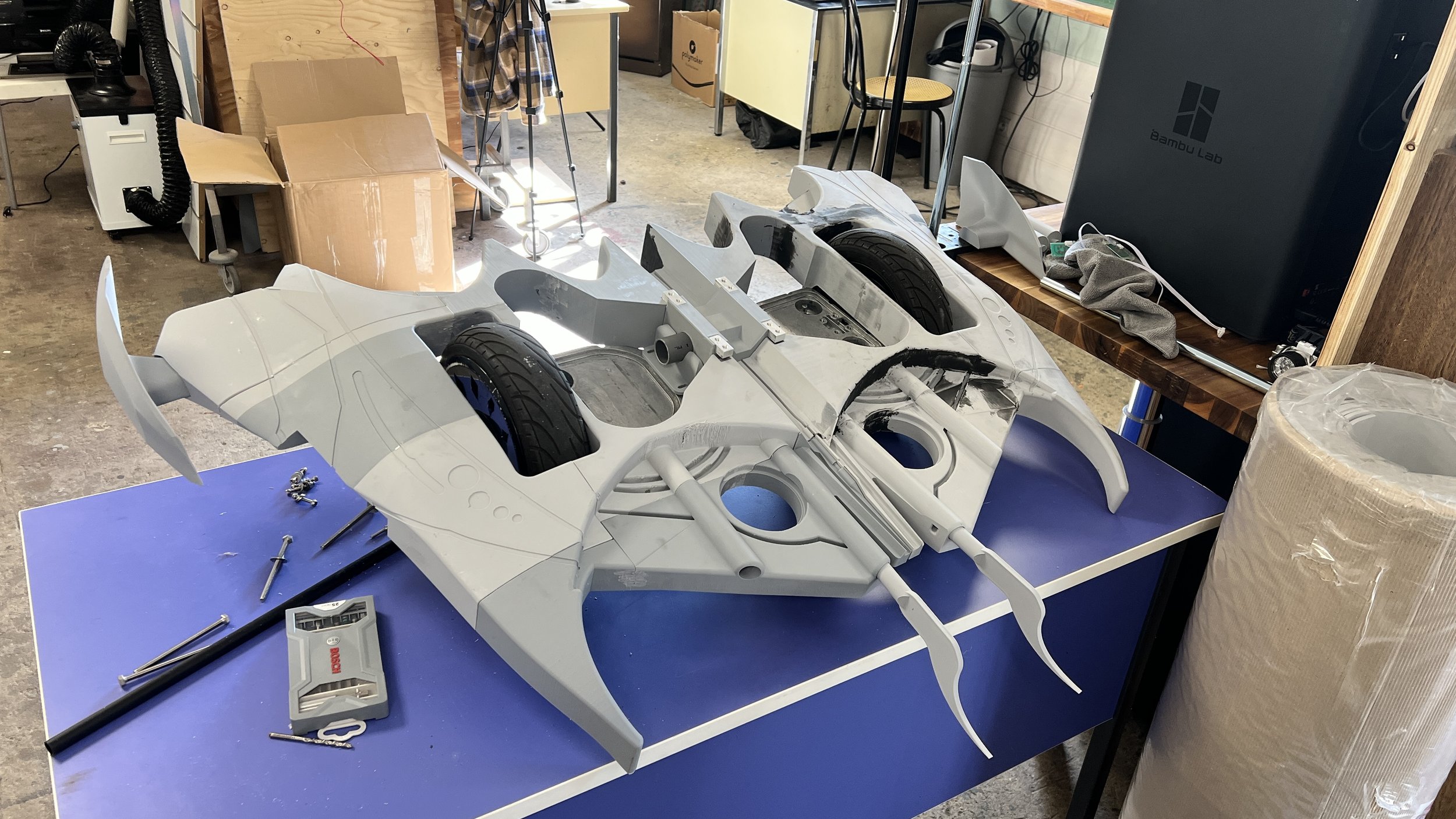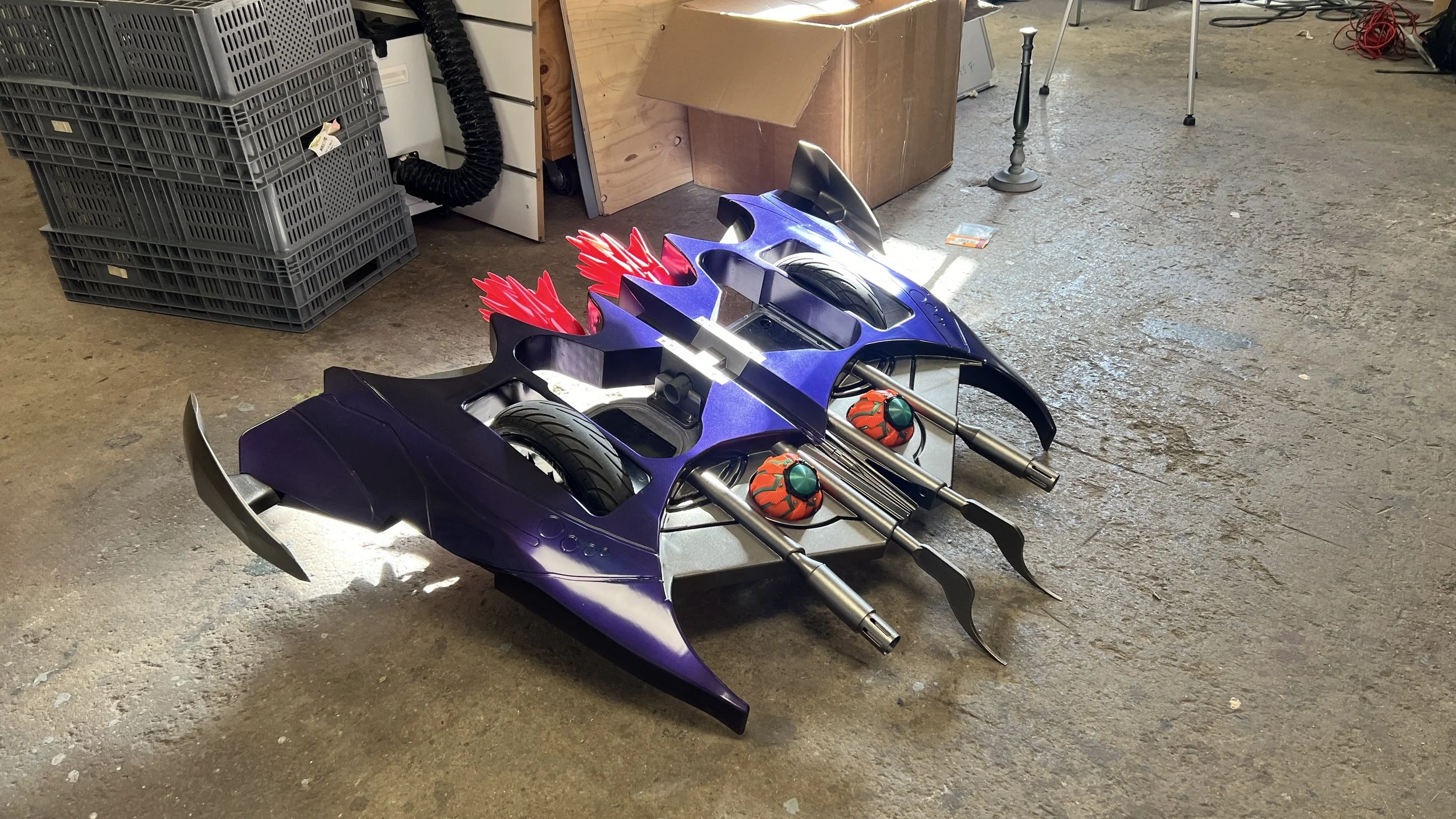🪂 I Built a Real-World Green Goblin Glider — Turning Comic Chaos into Engineering Reality
You know how some ideas are just too wild to ignore?
For me, it was the Green Goblin’s glider — that insane flying machine that somehow balances chaos, precision, and pure style.
Instead of just daydreaming about it, I decided to engineer one from the ground up.
The goal: design, 3D-print, and assemble a rideable Green Goblin-style glider that doesn’t just look cool but actually moves and functions in the real world.
What started as a “what if…” sketch quickly evolved into a full-scale CAD and fabrication challenge — powered by SOLIDWORKS, sculpted in xShape, printed on my Bambu Lab X1 Carbon & P1S, and brought to life using CosPLA by Polymaker filament for that perfect glossy super-villain finish.
💻 From Concept to CAD: Designing the Glider
The first step was defining what a real Green Goblin glider could look like — something aerodynamic, balanced, and wearable without needing rocket propulsion (for now 😅).
Using SOLIDWORKS, I drafted:
A main frame designed for visual accuracy and stability.
A rider platform integrated around an actual hoverboard base — the secret to making the glider rideable.
🌀 Sculpting the Complex Shapes with xShape
The glider’s sweeping curves and aggressive edges were impossible to create using traditional parametric modeling alone. That’s where xShape came in. Using its Sub-D modeling tools, I sculpted the outer shell like digital clay — capturing the signature aerodynamic lines and menacing symmetry of the Goblin’s design.
Once satisfied with the sculpt, I exported the geometry back into SOLIDWORKS, where I integrated the mechanical and hoverboard mounting systems.
That hybrid workflow — xShape for creativity, SOLIDWORKS for precision — let me create something that looked cinematic yet worked mechanically in the real world.
🧩 Printing & Assembly: From Files to Function
All main components were printed on my Bambu Lab X1 Carbon & P1S, which handled large parts and complex geometries with ease. The speed and accuracy were game-changers, especially for multi-part assemblies.
The exterior was printed in CosPLA by Polymaker, chosen for its smooth finish and durability (perfect for cosplay-level builds), while the internal mounts and brackets were done in PolyLite Pro for added strength.
Print setup:
Layer height: 0.2 mm
Infill: 30% gyroid (light yet rigid)
Nozzle: 0.4 mm
Temps: 210 °C nozzle / 60 °C bed
After assembly, the “wings” locked onto the hoverboard frame using custom mounts printed in PolyLite Pro. The balance point was tuned through testing, ensuring it felt stable and responsive while riding.
🚀 The Mechanism: Maker Engineering Meets Motion
Okay — let’s set the record straight: this glider doesn’t fly (yet).
Instead, it’s fully rideable, built around a modified hoverboard that powers smooth ground movement while maintaining the iconic “glider” stance.
The steering comes directly from the hoverboard’s self-balancing controls. It’s surprisingly intuitive: once you’re on it, you really do feel like you’re gliding — just inches above the ground.
Combining the hoverboard’s mobility with the glider’s aerodynamic shell brought the fantasy to life without breaking the laws of physics.
🔍 What I Learned
Bambu Lab’s speed and accuracy are unbeatable for prototyping large, wearable builds.
xShape + SOLIDWORKS is the dream combo — sculpt in 3D space, then engineer for assembly.
CosPLA by Polymaker adds that perfect mix of aesthetic and structural quality for cosplay-grade, functional projects.
Using a hoverboard base made the project rideable and safe — turning an impossible flight concept into a fun, controllable maker vehicle.
🧠 Final Thoughts
This project was all about bringing comic-book imagination into engineering reality — one print, one iteration at a time.
A fusion of 3D design, mechanical engineering, and pure creativity, it’s proof that with the right tools — xShape, SOLIDWORKS, a Bambu Lab printer, and Polymaker filament — even the wildest fictional tech can take shape.
It doesn’t fly (yet), but when you’re riding it, it feels like it could.
And that’s the real magic of making: turning ideas into motion.
Massive thanks to Bambu Lab, SOLIDWORKS, xShape, and Polymaker for empowering makers to turn imagination into engineered art — and to every curious builder out there chasing their next crazy idea.


















